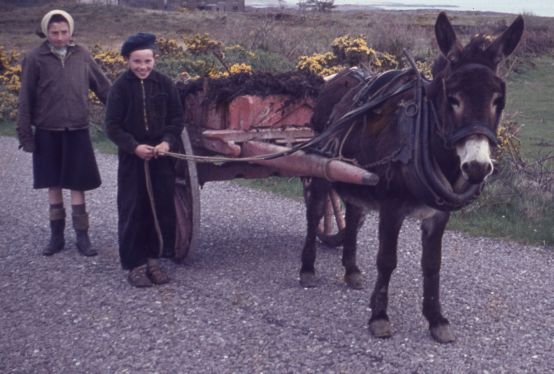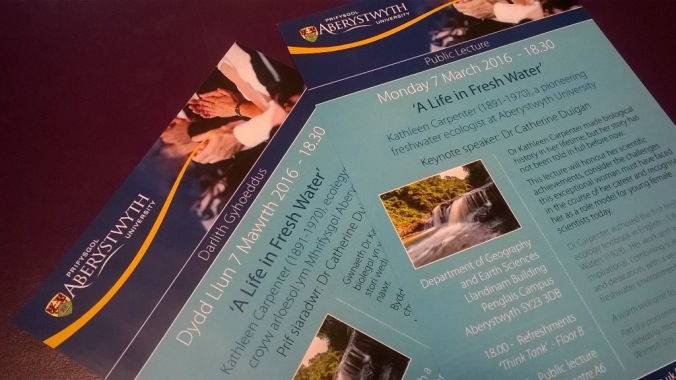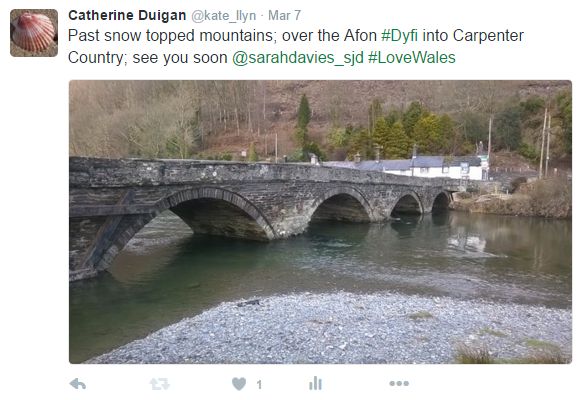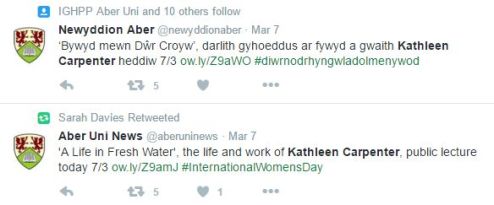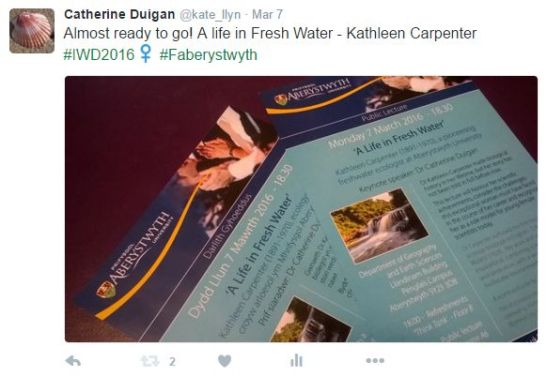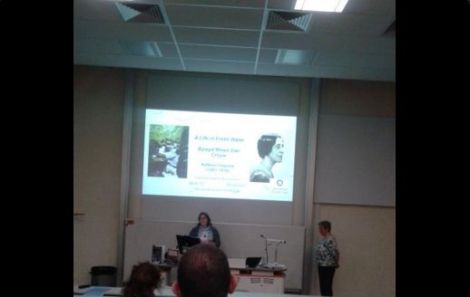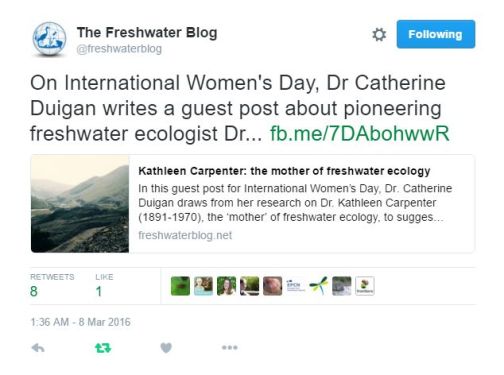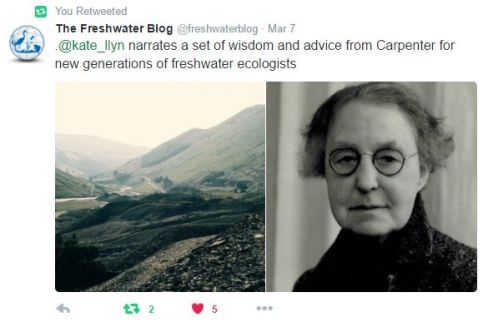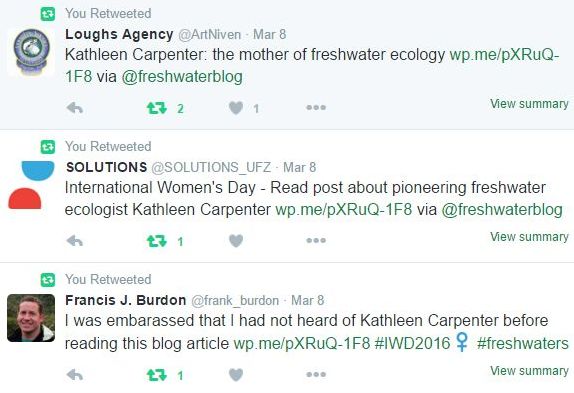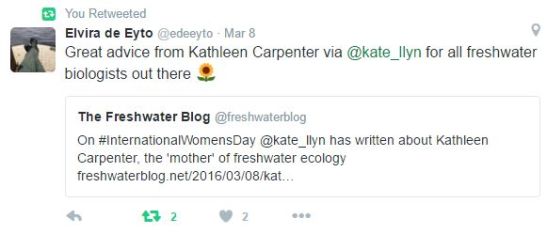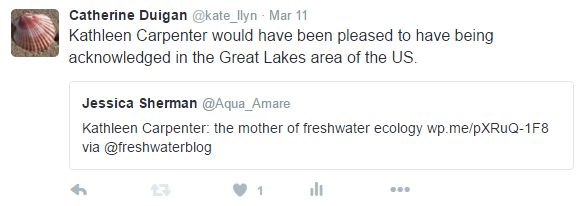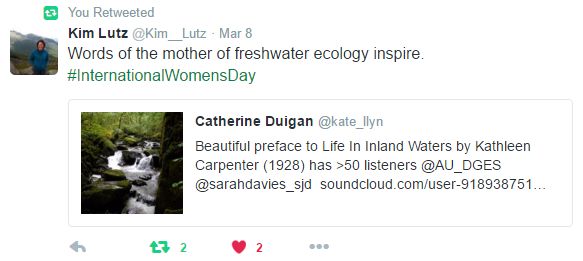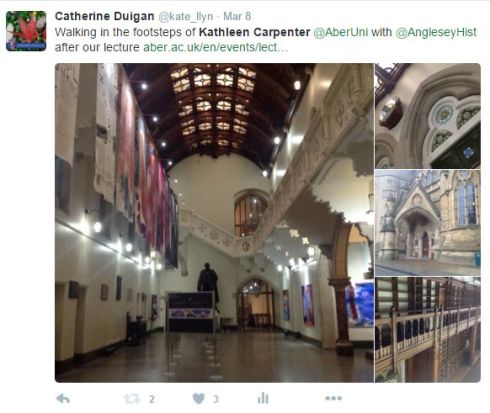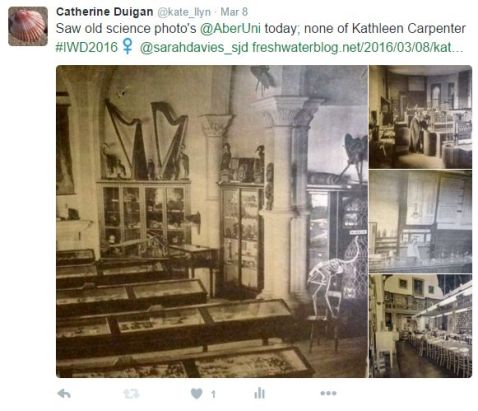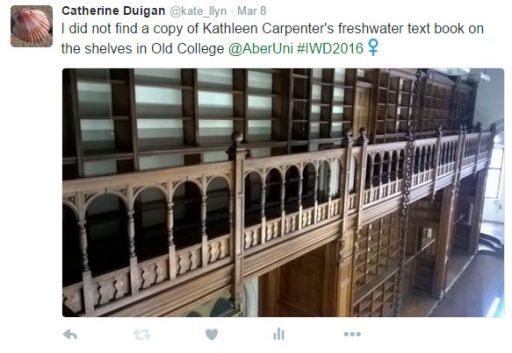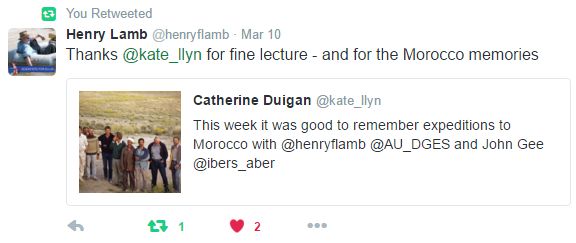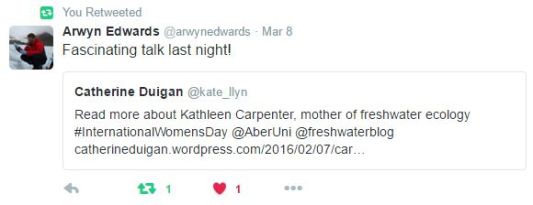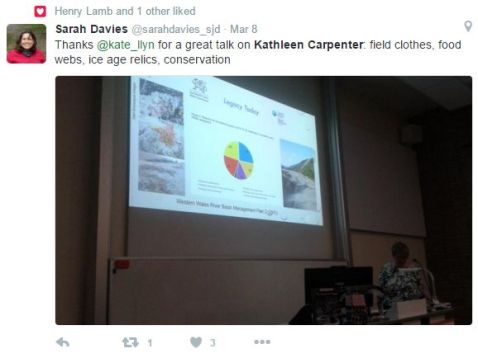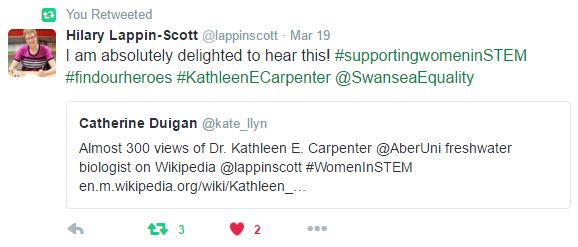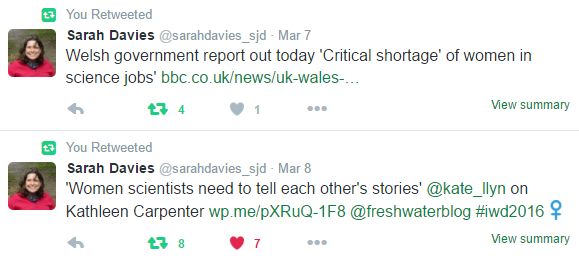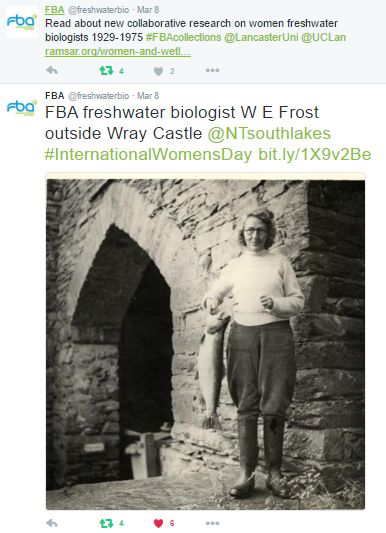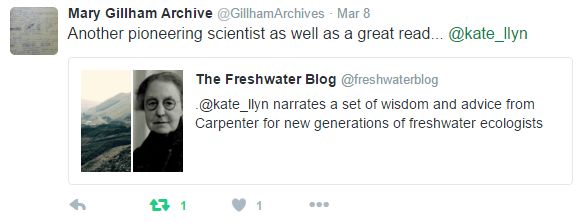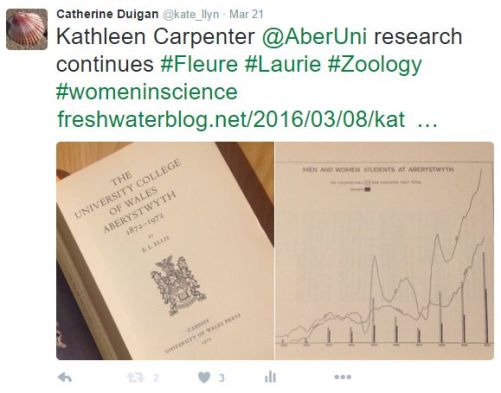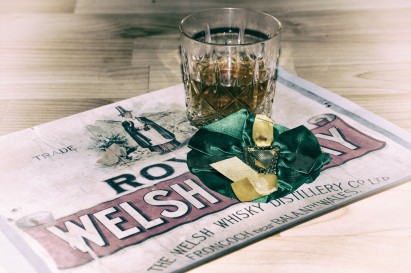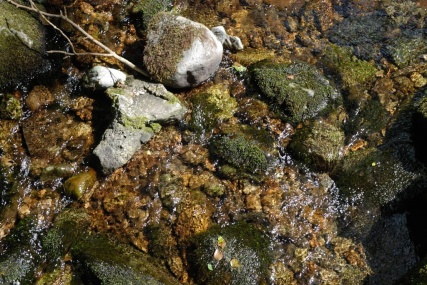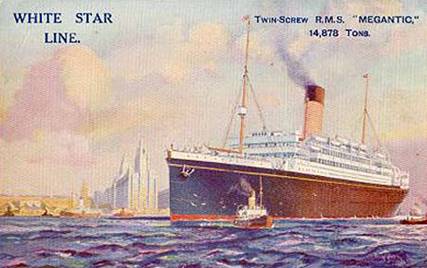
On 25th July 1924 the White Star Line Ship Megantic left Liverpool. It carried a precious cargo of scientists with many thought to be en route to a meeting of the British Association for the Advancement of Science in Toronto. Amongst the illustrious collection of distinguished gentlemen scientists was a young woman Kathleen Carpenter M.Sc. from Aberystwyth University just starting her career in freshwater ecology.
The passenger list gives addresses and occupations which were not always specific to their specialist areas. However in many cases their careers are subsequently recorded in scientific history:
William Alexander Balfour-Browne, Highgate, Zoology Lecturer; diving beetle expert, Cambridge, Queen’s Belfast & Imperial College; later President of the Society of British Entomology; friend of Robert Lloyd Praeger.
Prof. Edward Charles Baly, Liverpool, Professor of Chemistry.
Irving Howard Cameron, London, surgeon; helped to found the medical faculty of Toronto University; founder and editor of the Canadian Journal of Medical Science.
Kathleen Carpenter, Stockton, Tees, scientific investigator; pioneering freshwater ecologist.
Sydney Chapman, Morecambe, professor; mathematician and geophysicist; in 1930 he described the photochemical mechanisms that give rise to the ozone layer.
Rev. Albert Cortie, Stoneyhurst, lecturer; Jesuit priest; astronomer who travelled to Sweden on Solar eclipse expedition of August 1914; prominent member of British Astronomical Association.
Frederick George Donnan, London, University Professor.
Reginald Fisher, Harpenden, statistician; father of modern statistics!
William Godden, Stoneywood, biochemist; livestock dietician, later Deputy Director of Rowett Research Institute.
Dr. Charles Alfred Matley, paleontologist and geologist, worked in India and Wales; later Government Geologist for Jamaica.
Wilfred McLean, University College of Wales, Bangor, lecturer.
Florence Annie Meckeridge, London, lecturer.
Prof. Edward Mellanby discovered vitamin D and the role in preventing rickets.
Sir Max Muspratt and his family, manufacturer, Liverpool; chemist and politician, director of Imperial Chemical Industries, Member of Parliament, Lord Mayor of Liverpool.
Florence Adam Randall, London, lecturer.
Donald Ward Outler, Harpenden, biologist.
Harold James Page, Harpenden, chemist; chief chemist and head of the Chemical Department at Rothamsted Experimental Station; became director of the Rubber Research Institute of Malaya, and during the Second World War was interned in Sumatra for three and a half years.
Prof. Sidney Hugh Reynolds, Bristol, professor; geologist.
Prof. David “Thorday” Bangor University; plant physiologist.
Prof. William Ernest Turner, chemist and pioneer of scientific glass technology.
Prof. Robert George White, College Farm, Bangor University, animal breeding and farm management; bred an improved Welsh mountain sheep.
Other occupations represented on the ship included teachers, engineers, farmers, factory managers, cooks, accountants, domestic servants, housewives, advertising agent, clerks, fitters, foremen, manufacturers, land owners, telegraphist, draughtsman, golfball maker, nursery governess, veterinary surgeon, merchants, cotton buyer, carpenters, solicitor, insurance agent, school principles, upholsterer and typist. This cross-section of occupations reflected the wide socio-economic foundation of society at that time and a high degree of global mobility.
Four years later Kathleen Carpenter would publish a book chapter entitled “The Biology of Inland Waters in Relation to Human Life” and discuss the environmental impact of the Industrial Revolution. Her fellow passengers were players in this Revolution. But at this point in time she was about to spend several days confined to this bubble of scientists, industrialists and wider society, contemplating the next step in her developing career in freshwater ecology. Did she get advice from any of her fellow passengers? I think the answer is almost definitely yes. May be she was writing the book chapter?

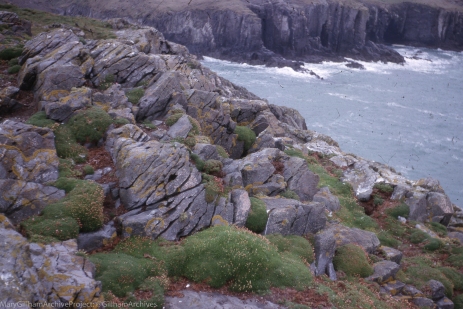
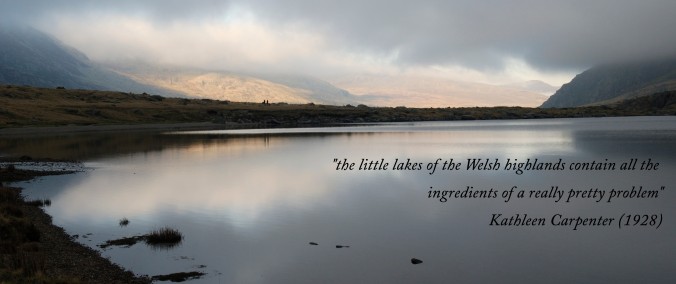
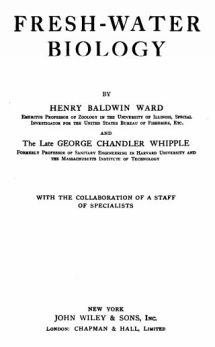 In the introduction to her Ph. D (1925) on the impact of metal mine pollution on
In the introduction to her Ph. D (1925) on the impact of metal mine pollution on 
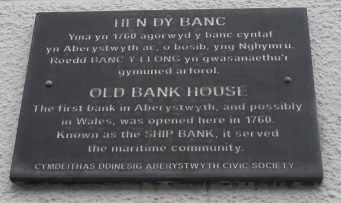
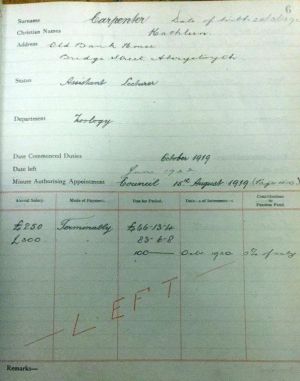
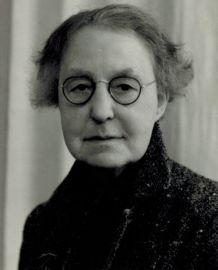
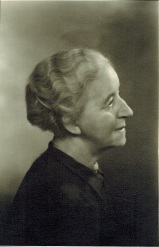

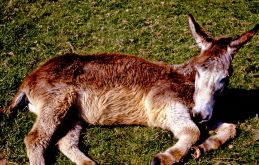 Cape Clear: “We also met an aged donkey who spent most of his time between feeds “stretched” on the ground – he too, past serving his master. All the animals encountered were very forthcoming, evidently regarding humans as friends. Or did they know that the likes of us, furnished with binoculars, were unlikely to put them to work.”
Cape Clear: “We also met an aged donkey who spent most of his time between feeds “stretched” on the ground – he too, past serving his master. All the animals encountered were very forthcoming, evidently regarding humans as friends. Or did they know that the likes of us, furnished with binoculars, were unlikely to put them to work.”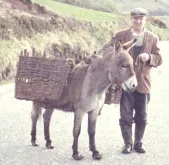 The Aran Islands: “Donkeys ranged freely over rocks, dunes and beaches, serving their master well as mounts or when their paired wicker panniers were laden with seaweed, potatoes or rye. Some hauled small jaunting carts with stores from the pierhead at Killeany.”
The Aran Islands: “Donkeys ranged freely over rocks, dunes and beaches, serving their master well as mounts or when their paired wicker panniers were laden with seaweed, potatoes or rye. Some hauled small jaunting carts with stores from the pierhead at Killeany.”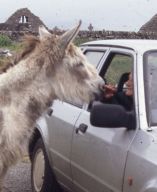 halt and he turned to us with a self-satisfied smile, knowing he had the upper hand.It took quite a while for Mairead to push him out of the way, one end at a time, after which he trust his head through the driver’s window to seek a reward for being so accommodating. There is something endearing and stubbornly Irish about Irish donkeys, even when they filch the apple from the hand before the first bite has been taken.”
halt and he turned to us with a self-satisfied smile, knowing he had the upper hand.It took quite a while for Mairead to push him out of the way, one end at a time, after which he trust his head through the driver’s window to seek a reward for being so accommodating. There is something endearing and stubbornly Irish about Irish donkeys, even when they filch the apple from the hand before the first bite has been taken.”